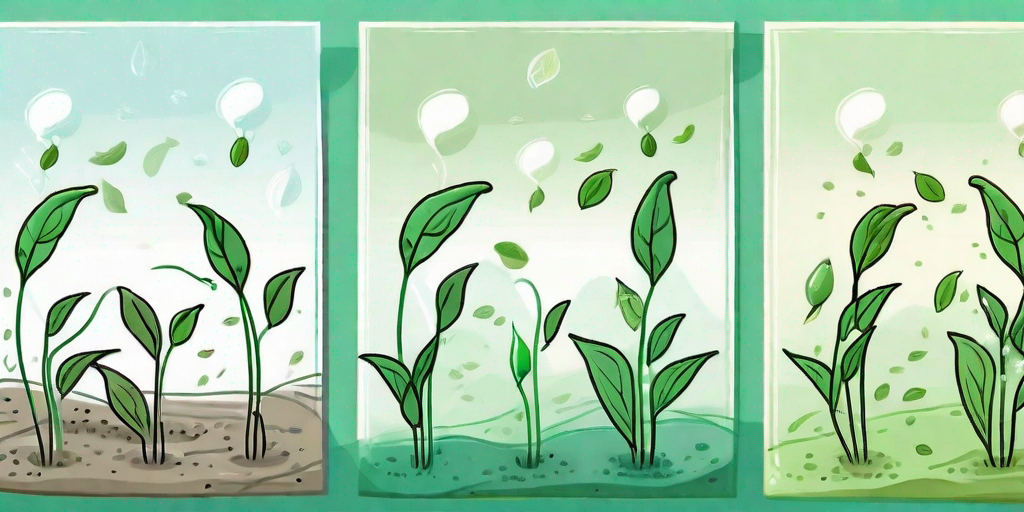
Welcome, green-thumbed enthusiasts and culinary adventurers alike! If you've always dreamed of growing your own food but didn't know where to start, you're in the right place. Today, we're going to delve into the world of snow peas, those delightful, crunchy little pods that add a fresh bite to stir-fries and salads. So, grab your gardening gloves and let's get started!
Understanding Snow Peas
Before we get our hands dirty, let's take a moment to appreciate the humble snow pea. Unlike their rounder cousins, the garden peas, snow peas are flat with tiny peas inside. They're sweet, crisp, and absolutely delicious eaten raw or cooked. Plus, they're packed with vitamins A, C, and K, and a good source of fiber. So, not only will you be growing a tasty treat, but a nutritious one too!
Now, you might be wondering, "Why snow peas? Why not tomatoes or lettuce?" Well, dear reader, besides their delightful taste and nutritional benefits, snow peas are also incredibly easy to grow. They're the perfect starter plant for novice gardeners. So, if you've killed every plant you've ever owned, fear not! Snow peas might just be your ticket to gardening success.
Getting Started: What You'll Need
Before we embark on our gardening journey, we need to gather our supplies. Here's what you'll need:
- Pea seeds
- A sunny spot in your garden
- Compost or well-rotted manure
- A trellis or some sort of support
- Watering can
- Patience (Trust us, you'll need it!)
Got everything? Great! Let's move on to the next step: planting.
Planting Your Snow Peas
First things first, find a sunny spot in your garden. Snow peas love the sun, but they also appreciate a little afternoon shade. So, a spot that gets 6-8 hours of sunlight a day is perfect. Once you've found the perfect spot, it's time to prepare the soil.
Start by digging a trench about 2 inches deep and 2 feet wide. Then, enrich the soil with compost or well-rotted manure. This will give your peas a nutrient boost and help them grow strong and healthy. Next, sow your seeds about 1 inch apart in the trench. Cover them with soil, water well, and then sit back and wait for the magic to happen.
Caring for Your Snow Peas
Now that your seeds are in the ground, it's time to switch gears from gardener to caregiver. Your peas will need regular watering, especially during dry spells. But be careful not to overwater, as this can lead to root rot. A good rule of thumb is to water when the top inch of soil feels dry to the touch.
As your peas grow, they'll need something to climb on. This is where your trellis or support comes in. Install it when your plants are about 4 inches tall. Then, gently guide the plants onto the support. They'll do the rest of the climbing themselves.
Harvesting and Enjoying Your Snow Peas
The moment you've been waiting for: harvest time! Snow peas are ready to harvest when the pods are about 3 inches long and still flat. Simply pick them off the plant, rinse, and enjoy. Remember, the more you pick, the more peas your plant will produce. So, don't be shy about picking those pods!
Now, for the best part: eating your homegrown snow peas. They're delicious raw, in salads, or lightly sautéed in a stir-fry. Or, for a simple, delicious side dish, try steaming them and tossing with a little butter and salt. Bon appétit!
Frequently Asked Questions
When is the best time to plant snow peas?
Snow peas are a cool-weather crop, so the best time to plant them is in early spring or fall.
How long does it take for snow peas to grow?
From seed to harvest, snow peas take about 60-70 days to grow.
Can I grow snow peas in a pot?
Absolutely! Just make sure the pot is deep enough for the roots and has good drainage.
Well, that's it, folks! You're now well-equipped to start your snow pea growing journey. Remember, gardening is all about patience and learning. So, don't be discouraged if your first attempt doesn't go as planned. Keep trying, keep learning, and most importantly, keep having fun. Happy gardening!











